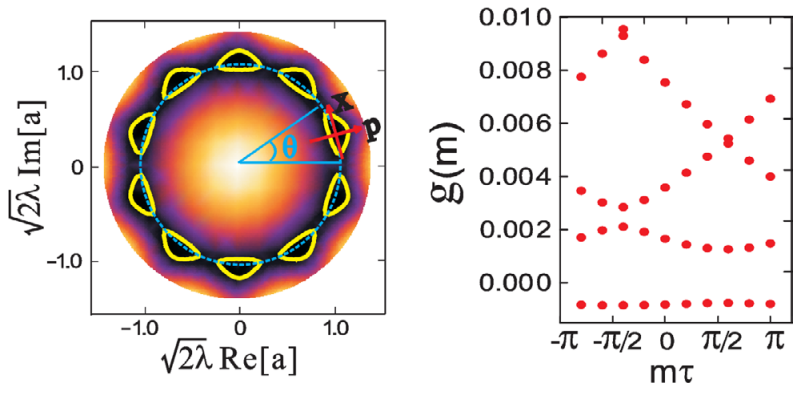Continuous time translation symmetry is a fundamental concept observed in time-independent many-body systems. This symmetry implies that the laws of physics remain consistent over time, meaning the behavior of the system does not change as time progresses. In such systems, the properties and dynamics do not depend on when they are observed; they are invariant under a shift in time. This principle is a cornerstone in the understanding of many-body physics and has profound implications in the study of quantum mechanics and statistical physics.
The phenomenon of spontaneous breaking of time translation symmetry can occur under specific conditions. This breaking is observed if a system is initially prepared in an excited eigenstate, rather than in its lowest energy state, known as the ground state. In such scenarios, the system’s properties may evolve over time in a manner that is not time-translationally symmetric. This means that the system can exhibit behaviors or properties at certain times that are different from others, despite the underlying physical laws being time-independent.
In recent scientific advancements, the concept of Floquet time crystals has been realized in laboratory settings. Time crystals represent a state of matter where time translation symmetry is broken spontaneously, leading to a system that exhibits periodic motion in time. The realization of Floquet time crystals in laboratories is a significant achievement, showcasing the potential to create and study systems that exhibit this novel and exotic form of matter. These time crystals are named after the Floquet theory, which deals with the behavior of systems under periodic driving.
Resonant driving is a technique that can lead to intriguing changes in the properties of a system, particularly in its band structure in the context of the quasi-energy spectrum. When a system is subjected to periodic driving at specific resonant frequencies, its energy levels can be modified, resulting in a new band structure in the quasi-energy spectrum. This phenomenon is crucial in understanding how external forces and fields can be used to manipulate the energy states and dynamics of a system, which has implications in fields like condensed matter physics and quantum computing.
Time crystals are fundamentally related to the spontaneous breaking of translation symmetry in time, which is a distinct concept compared to spatial crystals. While spatial crystals, such as common minerals or metals, exhibit a repeating pattern in space, time crystals show a repeating pattern in time. This temporal periodicity is a groundbreaking discovery, as it extends the concept of symmetry breaking beyond the spatial domain, offering new perspectives in the study of phase transitions and non-equilibrium systems.
Finally, the spontaneous formation of periodic structures in time, characteristic of time crystals, is not possible if a system is prepared in its ground state or in a thermal equilibrium state. In these states, the system adheres to time translation symmetry, meaning that any periodic behavior or structure in time cannot spontaneously emerge. This underscores the uniqueness of excited or non-equilibrium states in facilitating the formation of time crystals, representing a departure from the traditional understanding of phase transitions and symmetry breaking in physics.
Based on
Sacha, K., & Zakrzewski, J. (2018). Time crystals: a review. Reports on Progress in Physics, 81(1), 016401. https://doi.org/10.1088/1361-6633/aa8b38

